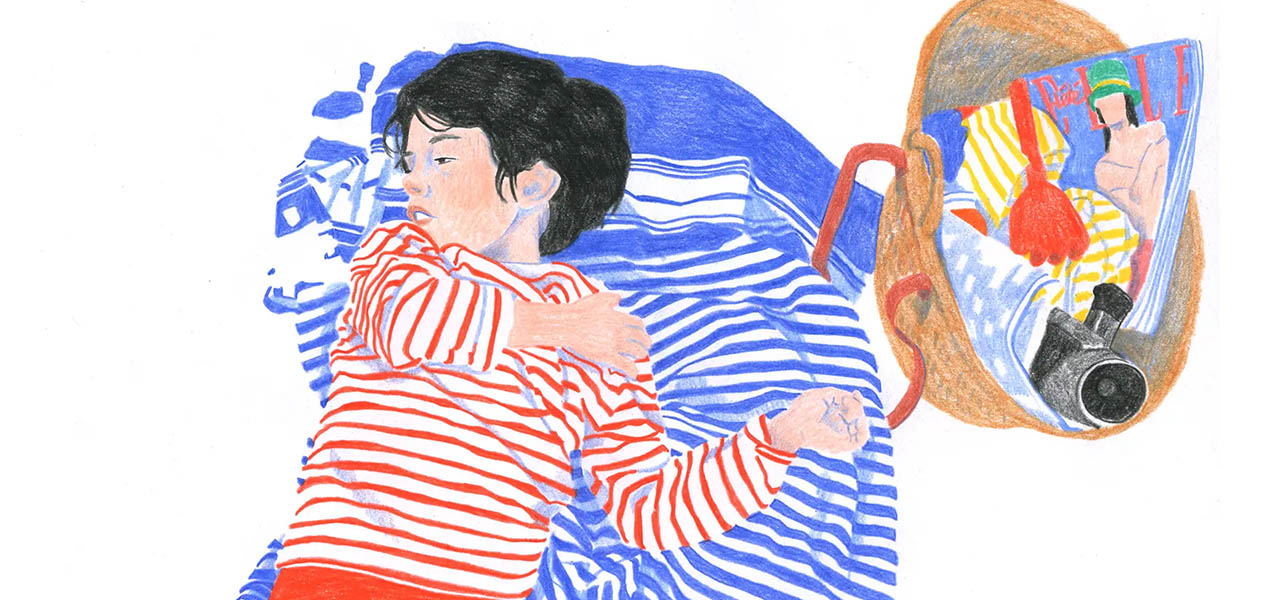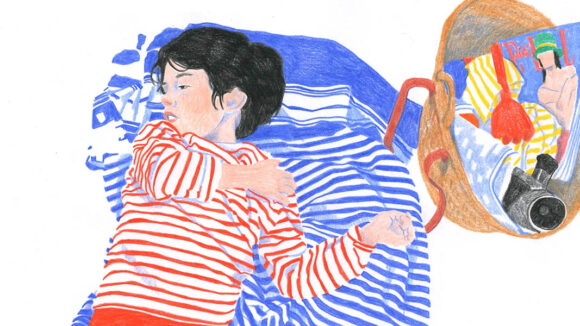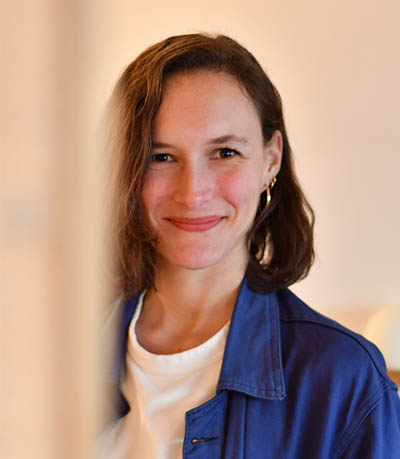

2025 Oscars Short Film Contenders: ‘Summer 96’ Director Mathilde Bédouet
Welcome to Cartoon Brew’s series of spotlights focusing on the animated shorts that have qualified for the 2025 Oscars. The films in this series have qualified through one of multiple routes: by winning an Oscar-qualifying award at a film festival, by exhibiting theatrically, or by a Student Academy Award.
Today’s film is Summer 96 (Été 96) from French director Mathilde Bédouet and producers L’heure d’été and Tita B Productions. The short earned its Oscars qualification by winning the César Award for animated short film.
Summer 96, a rotoscoped 2d animated short, follows the misadventure of Paul, his family, and their friends, as they all find themselves trapped by the tide on Callot Island. The routine (and boring) mid-August picnic turns into a frightening experience, while Paul may find out more about himself than he anticipated.
Cartoon Brew: Summer 96 is dedicated to your parents. How did you feel representing them through the point of view of children?
Mathilde Bédouet: I feel a lot of tenderness and nostalgia towards these characters. Through this film, I wanted to convey the feeling when a child’s point of view on his parents topples. It’s a key moment where, as you grow up, you understand that your parents are imperfect, and that they don’t always have all the answers to life’s challenges.
What was it about this story or concept that connected with you and compelled you to direct the film?

The story of this film was born out of a box full of camcorder cassettes that I found in my father’s cellar. A treasure box full of memories. Rewatching them was very moving because, at the time, filming as an individual was expensive, and so many shots were cut with big leaps from one era to another. On most of these tapes, we saw our holidays in Brittany with this island in the background. I was very inspired by this footage in terms of energy, styling, and details. Despite the holidays’ overall joy, I remembered it also as a moment of solitude, a period of childhood where we find ourselves between two worlds. The world of children and one of the adults, without being part of either. It’s the time when we realize that we can only count on ourselves.
What did you learn through the experience of making this film, either production-wise, filmmaking-wise, creatively, or about the subject matter?
At the beginning of the process, I was hoping to use these archives themselves in the film, but I realized that it offered limitations in my storytelling approach. I decided to keep the footage as a sort of guardian spirit, while writing a new fiction deeply inspired by these videos. I shot the whole story with actors, based on my memories but also pushing the dramaturgy a bit more.
Another big realization was that my use of rotoscope takes a very long time — more than 5,000 drawings! But still I want to do many more projects using this technique because I’m convinced that the acting of the actors brings a lot to the final emotion once the film is redrawn. I had a lot of fun throughout the production of the film. I loved going from a very joyful, collective energy during the shooting to a more meditative and solitary period during the drawing phase. I also learned how important it was to be well surrounded, and how lucky I am to have such producers. Finally, I find it wonderful to think that a film is made up of the talent that each person brings to the project and that if someone is missing, everything collapses.
Can you describe how you developed your visual approach to the film? Why did you settle on this style/technique?
I chose to use rotoscope animation because I really like the realistic aesthetic it allows the creator to use. I wanted to use this process to capture all the humanity of the actors, their acting, their spontaneity, their voices. To draw the film, I chose a limited color range to create a harmony within the whole story. I used a palette of bright colors in colored pencil that evoke holidays and childhood.
White also takes up a lot of space in the film; it evokes this desire to talk about a somehow forgotten memory, and therefore a fragmented image. I redrew what interested me in the live-action image that I shot beforehand to direct the viewer’s eyes towards the focus I wanted to use narratively. In that sense, using the whites allows the viewer the ability to project their own memories onto the film and in the offscreen space.

